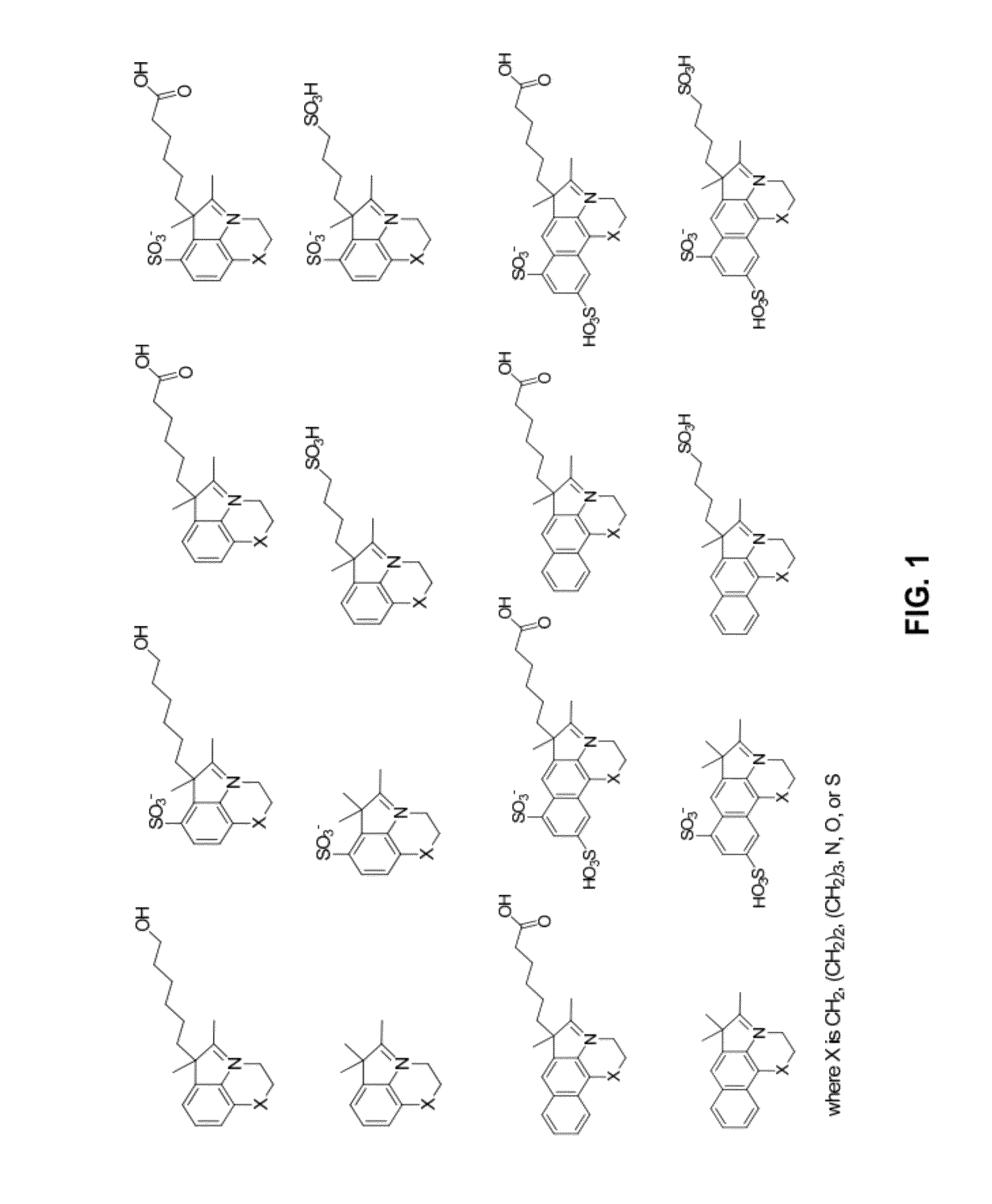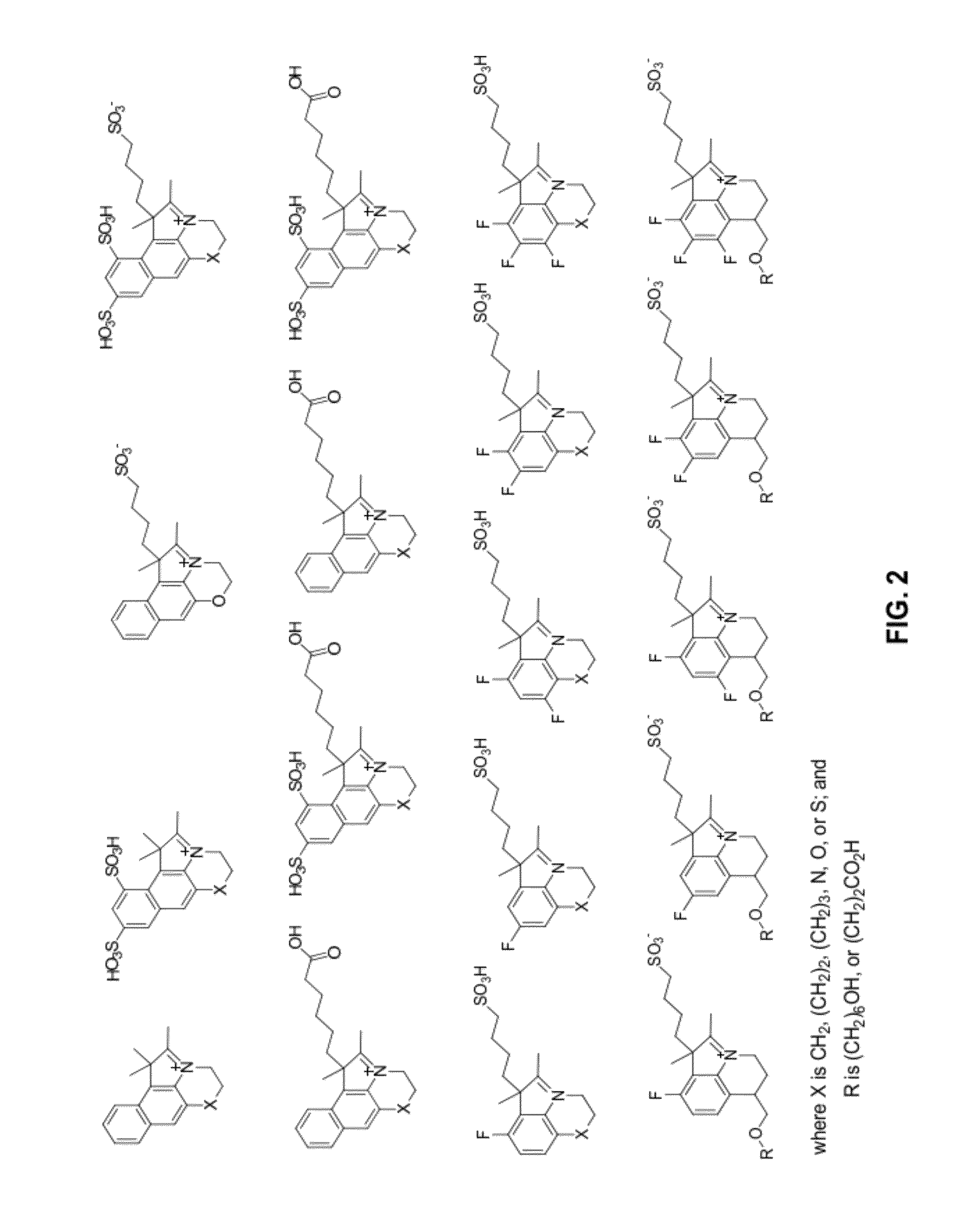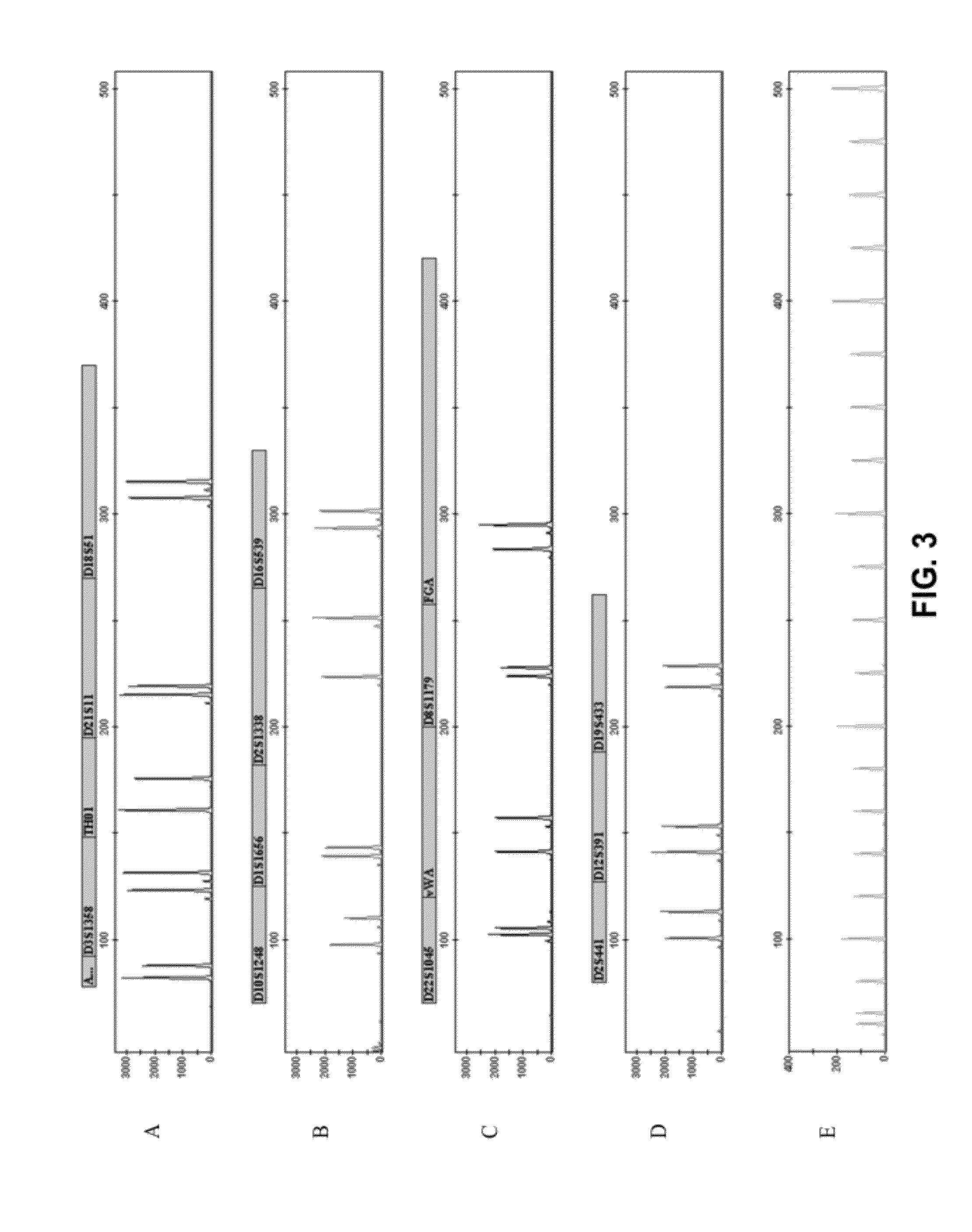Reactive cyanine compounds
a technology cyanine compound, which is applied in the field of reactive cyanine dye, can solve the problems of difficult preparation of certain desired sulfoalkyl derivatives of reactive carbocyanine dye, and achieve the effect of improving spectral resolution and increasing photostability
- Summary
- Abstract
- Description
- Claims
- Application Information
AI Technical Summary
Benefits of technology
Problems solved by technology
Method used
Image
Examples
example 1
Preparation of Intermediates and Biological Labels: Compound PBI 3525
[0221]
[0222]1-Nitroso-1,2,3,4-tetrahydroquinoline. To a stirred solution of 1,2,3,4-tetrahydroquinoline (10.0 g, 75.08 mmol) in 150 mL CH2Cl2 was added 150 mL 1M H2SO4, followed by NaNO2 (5.70 g, 82.59 mmol). The reaction was stirred for 1.5 hours. The reaction mixture was partitioned, the organic layer retained, washed with a saturated solution of NaCl (aqueous), dried over Na2SO4 and concentrated to give the product (13.4 g 100%) as a dark oil. 1H-NMR (300 MHz, CDCl3): δ 8.08 (d, 1H), 7.28 (m, 3H), 3.92 (m, 2H), 2.82 (m, 2H), 2.03 (m, 2H) ppm; MS m / z calculated for C9H10N2O (M+H): 163.09. Found: 163.1 (M+, ESI+).
[0223]
[0224]3,4-Dihydroquinolin-1(2H)-amine. A solution of 1-nitroso-1,2,3,4-tetrahydroquinoline (10.0 g, 61.66 mmol) in 60 mL dry THF was added dropwise to a refluxing suspension of LiAlH4 (4.26 g, 112.21 mmol) in 130 mL THF. The reaction was allowed to reflux for 1 hour, cooled to 0° C., and then quench...
example 2
Preparation of Intermediates and Biological Labels: Compound PBI 3742
[0231]
[0232]Ethyl 2-acetyl-8-(tert-butyldimethylsilyloxy)-2-methyloctanoate. Ethyl-2-methylacetoacetate (10.0 g, 69.36 mmol) was dissolved in 5 mL DMF and added dropwise to a suspension of NaH (2.77 g, 69.36 mmol) in 20 mL DMF at 0° C. Upon completion of addition, the mixture was allowed to warm to room temperature for 30 minutes giving a clear orange mixture that was cooled to 0° C. To this was added 6-bromohexanoate (23.56 g, 79.77 mmol) dropwise as a solution in 5 mL DMF over 20 minutes. The reaction mixture was warmed to 60° C. overnight, then cooled to room temperature and diluted with ethyl acetate. The organic layer was washed with 1st with dilute NH4Cl solution, followed by water. The separated organic layer was dried over Na2SO4 and concentrated to a yellow oil. This crude product was subjected to silica gel chromatography yielding a colorless oil (13.5 g, 54.3%). 1H-NMR (300 MHz, CDCl3): δ 4.16 (m, 2H), 3...
example 3
Preparation of Intermediates and Biological Labels: Compounds PBI 3526, PBI 3665, PBI 3688, PBI 3786, and PBI 3785
[0241]
[0242]Sodium 1,2,3,4-tetrahydroquinoline-7-sulfonate. 1,2,3,4-tetrahydroquinoline was added dropwise to 40 mL fuming sulfuric acid at 0° C. over 15 minutes. This mixture was then heated to 100° C. for 1 hour with stirring. After cooling to 0° C. saturated NaCl (aqueous) was added drop wise, precipitating the crude product as a white solid. The solid was washed, first with cold isopropanol, followed by diethyl ether, then dried under vacuum to give the desired product as a white solid. 1H-NMR (300 MHz, d6 DMSO): δ 7.43 (m, 2H), 7.21 (d, 1H), 3.38 (m, 2H), 2.81 (t, 2H) 1.96 (m, 2H) ppm; MS m / z calculated for C9H10NO3S (M−): 212.04. Found 212.0 (M−, ESI−).
[0243]
[0244]5,6,6-Trimethyl-1,2,3,6-tetrahydropyrrolo[3,2,1-ij]quinolinium-7-sulfonate. Sodium 1,2,3,4-tetrahydroquinoline-7-sulfonate (6.4 g, 30.0 mmol) was suspended in 15 mL glacial acetic acid with stirring. To t...
PUM
| Property | Measurement | Unit |
|---|---|---|
| temperature | aaaaa | aaaaa |
| temperature | aaaaa | aaaaa |
| temperature | aaaaa | aaaaa |
Abstract
Description
Claims
Application Information
 Login to View More
Login to View More - R&D
- Intellectual Property
- Life Sciences
- Materials
- Tech Scout
- Unparalleled Data Quality
- Higher Quality Content
- 60% Fewer Hallucinations
Browse by: Latest US Patents, China's latest patents, Technical Efficacy Thesaurus, Application Domain, Technology Topic, Popular Technical Reports.
© 2025 PatSnap. All rights reserved.Legal|Privacy policy|Modern Slavery Act Transparency Statement|Sitemap|About US| Contact US: help@patsnap.com



